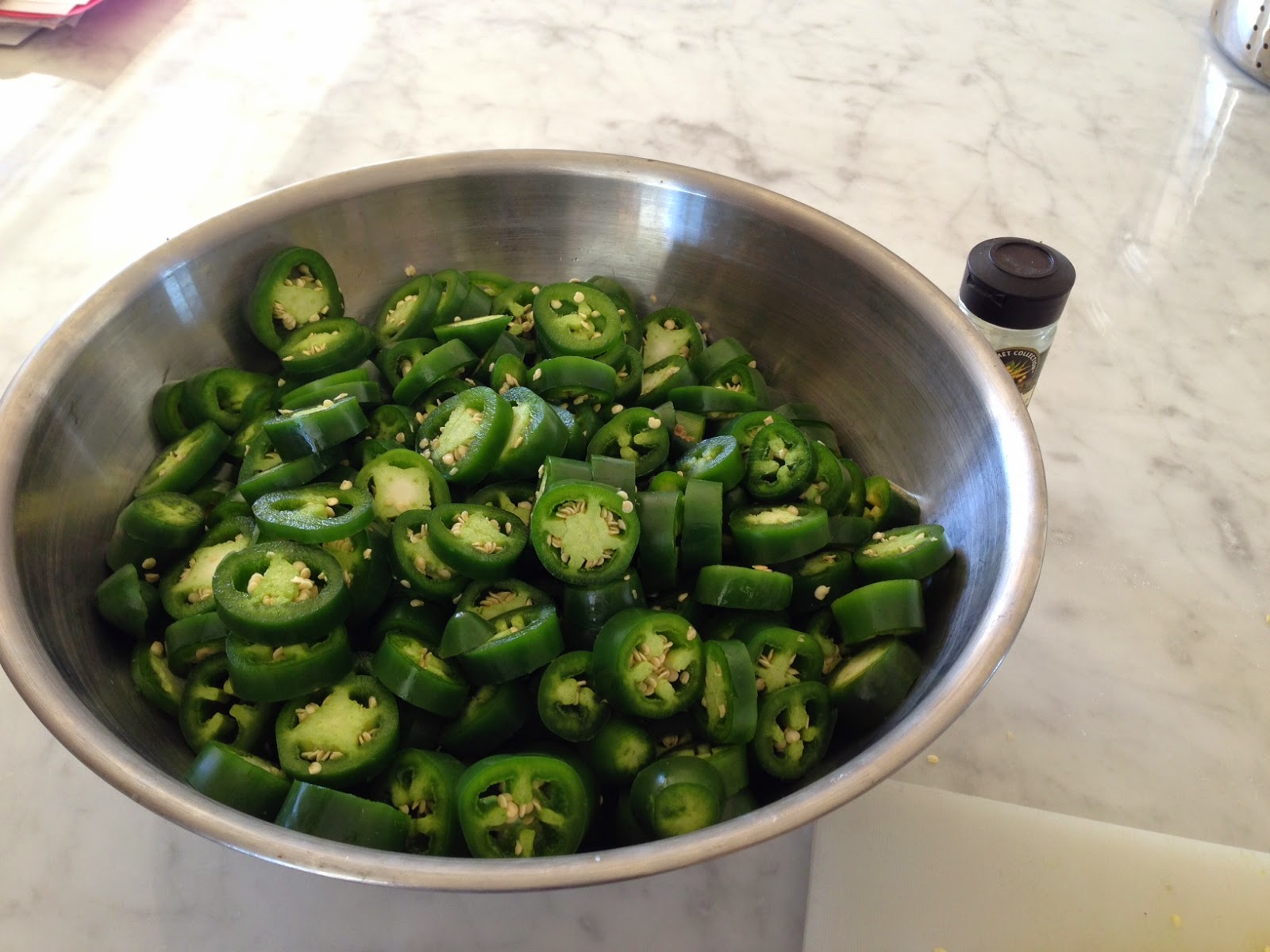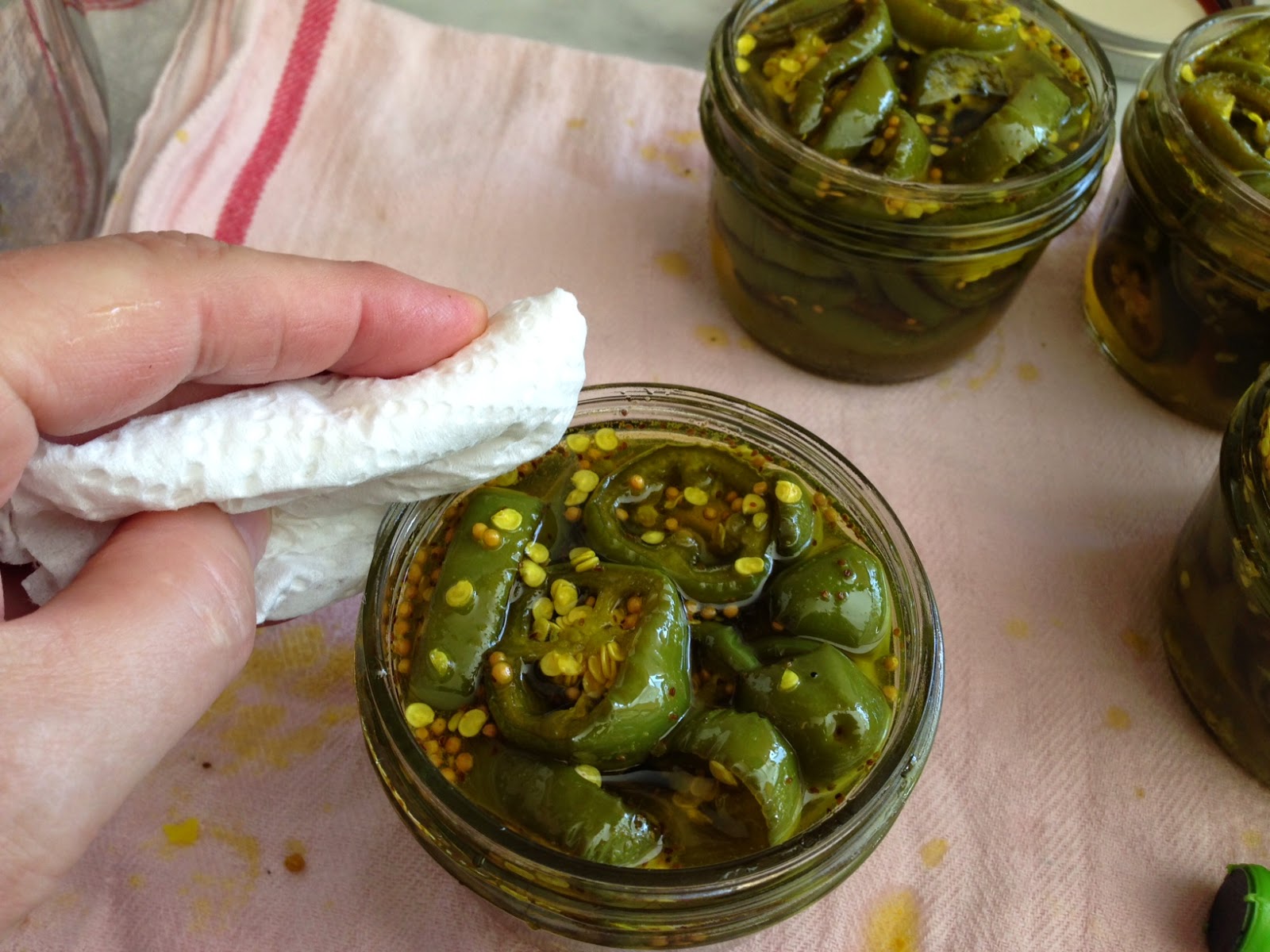Cowboy Candy--Candied Jalapenos--YUM!
One of the easiest and most delicious things that I've canned is Cowboy Candy, also known as Candied Jalapenos. I grow lots of peppers, so I've adapted a recipe shared in my Grow LA Victory Garden class by my fabulous neighbor and Master Food Preserver, Nancee Siebert. She initially got the recipe from the website SB Canning.
I started by washing and drying 2 pounds of jalapeno peppers. You can add red or yellow for color but all I had was green.
Next, I sliced all the peppers in 2" pieces. The larger the chunks of pepper, the better they look in the final product.
Next I made the Pickling Liquid by combining:
1 cup Apple Cider Vinegar (can use regular vinegar or a combination)
2 cups of sugar
1 tbs mustard seed
1 tbs dry mustard
1 tsp tumeric
1 tsp celery seed
1/2 tsp cayenne pepper
1 head garlic using garlic press (can use 2 tbs garlic powder as substitute
Combine and bring to a boil, then simmer for 5 minutes. Then add jalapenos and simmer for 5 more minutes.
 | |
| 21.5 quart--used to process, 12 quart--used to sterilize, 6 quart--used for pickling liquid |
.jpg) |
| Sterilized jars, lids, funnel, jar lifter, headspace tool, dishtowels are ready to go |
The tricks I've learned along the way are that you need at least 1 more large pot than you think you'll need. You'll want a pot to make your pickling liquid, a large pot of water boiling to process your jars as well as another pot to sterilize them. I have seen people use their dishwasher or oven to sterilize, but I stick to a pot of boiling water.
Have several clean dish towels, all of your canning implements and paper towels ready at hand.
So now we are ready to process or "can" our Candied Jalapenos! Fill your sterilized jars with peppers and liquid leaving 1/2 headspace. Wipe the top of the jar with a damp paper towel and add lid and band tightened to secure, but not super tight. This is referred to as "finger tight" in canning circles.
Once your jars are filled, add them to a water bath canner. This is essentially a large pot of boiling water. Pictured is my 21.5 quart pressure canner, but I'm using it as a bath bath canner due to it's large capacity. Water should be 2" above the jars. Once the water starts boiling, put the lid on and "process" (boil) for 15 minutes.
Another really helpful tip learned from Nancee is how to be patient. After processing for 15 minutes, turn off the flame. Wait 5 minutes and take off the lid. Wait 5 more minutes and remove the jars from the pot and place on clean dish towels. It is important not to disturb the jars until they are cool and have sealed. You will hear the distinctive "pop" as the jars vacuum seal. Nancee's method of "Wait 5 minutes between every step" ensures you are not impatient, thus ruining your hard work.
This recipe yielded 5 1/2 pints of Candied Jalapenos. They really do get better with time. Wait at least 4 weeks before using them. The time mellows the flavors and it is worth the wait!!
Now the really important part....how to use them! First, you can eat them right out of the jar. They really are that good. I also make a pinwheel out of a flour tortilla, cream cheese and the cowboy candy. They are excellent with cheese and crackers. I serve them with any Mexican Food dish. They are great as a condiment on hamburgers or hot dogs. I hope you enjoyed this post on fabulous candied jalapenos!
Cheers~
Marti
























